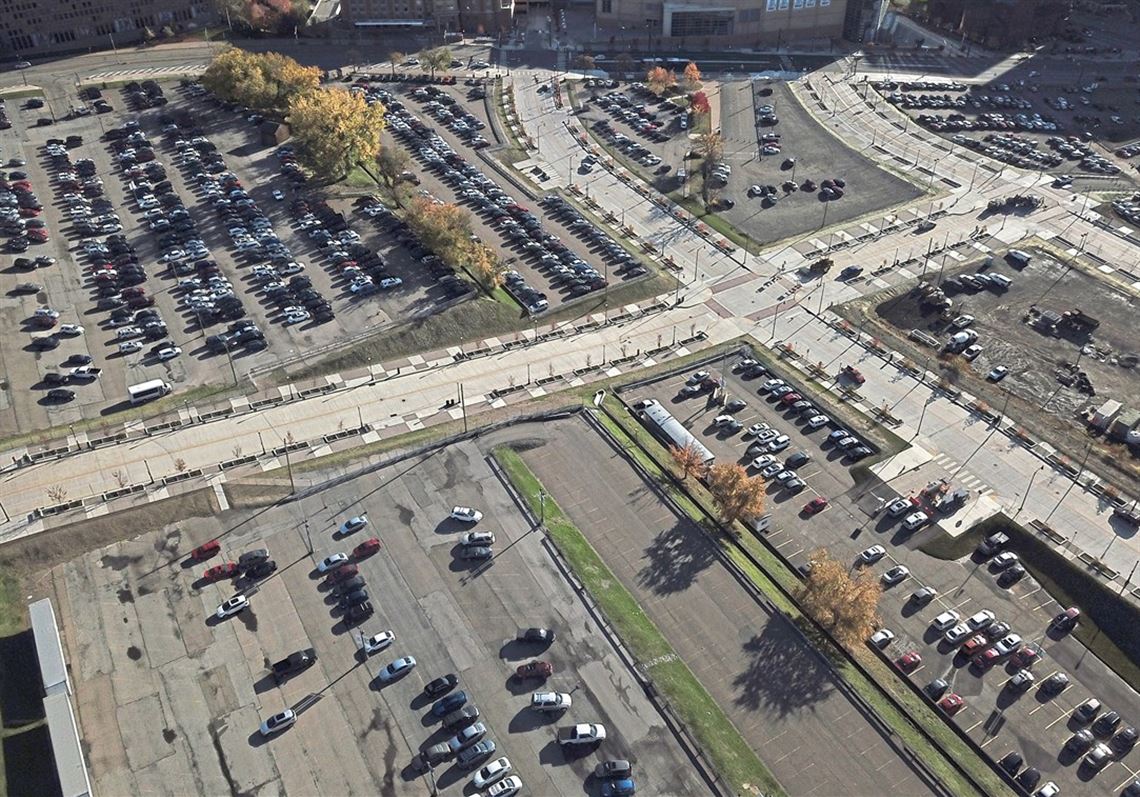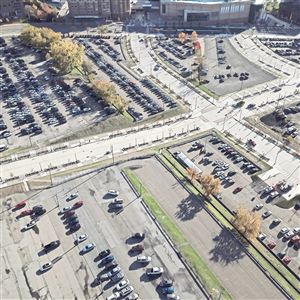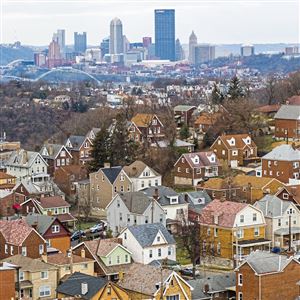A St. Louis developer unveiled plans Wednesday evening for the first of 935 units of housing to be built at the former Civic Arena site, marking the formal start of a long-delayed development.
During a Hill District community meeting, representatives for McCormack Baron Salazar detailed five phases of residential construction on part of the site just below Crawford Square. The first phase will consist of 255 units spread over two buildings, three to five stories in height.
One will feature 54 one-, two- and three-bedroom units, with most of them affordable to households earning between 20 to 60 percent of the area median income. Twelve of the apartments in that building will be market rate. The other building will have 201 units, all market rate.
Randy Rhoads, vice president of McCormack Baron Salazar Development Inc., said bidding for the first phase will start in September, with construction expected to begin in November. All units in the first phase should be finished in about two years.
The second phase will involve construction of 250 units, all to be done by minority developer Intergen Real Estate Group, a joint venture led by KBK Enterprises. In the other phases, McCormack Baron, the developer behind Crawford Square, will build another 430 units.
The total of 935 units is short of the 1,100 units originally planned on the 28-acre publicly owned site.
Travis Williams, chief operating officer of the Pittsburgh Penguins, said the number was reduced in erecting two buildings in the first phase instead of one and because of the need for low-income tax credits to close funding gaps.
He said the Penguins, who hold the development rights to the property, will continue to push McCormack Baron and Intergen “to grow that density as much as possible.”
In all, 20 percent of the 935 apartments will be designated as affordable, in keeping an agreement reached with Hill leaders.
Marimba Milliones, president and CEO of the Hill Community Development Corp., questioned whether the decision to seek highly competitive 9 percent low income tax credits for construction could end up delaying development if they aren’t awarded.
She also said there are other projects in the Hill and elsewhere that could use such credits. She urged McCormack Baron to consider using 4 percent credits, which are more readily available, but which might not be enough to cover funding gaps in the project.
Others spoke of the need to get Hill businesses and residents trained to take advantage of the large number of contracts and jobs that the arena development is expected to generate.
Joseph A. Massaro III, president and CEO of Massaro Construction Group, general contractor for the housing first phase, said that with construction of the Shell cracker plant in Beaver County, the UPMC hospitals expansion, and other projects, local trade union work is readily available for those who have skills or who are willing to be trained.
“They’re dying for people,” he said.
Likewise, Francine B. Cameron, president and CEO of Cameron Professional Services Group, which is helping with minority and women’s business participation on the arena project, urged business people to attend workshops to prepare them to get work at the site.
“It would be a shame for those who have businesses in this audience not to be able to participate in this project,” she said.
Mark Belko: mbelko@post-gazette.com or 412-263-1262.
First Published: December 7, 2017, 1:36 p.m.

















